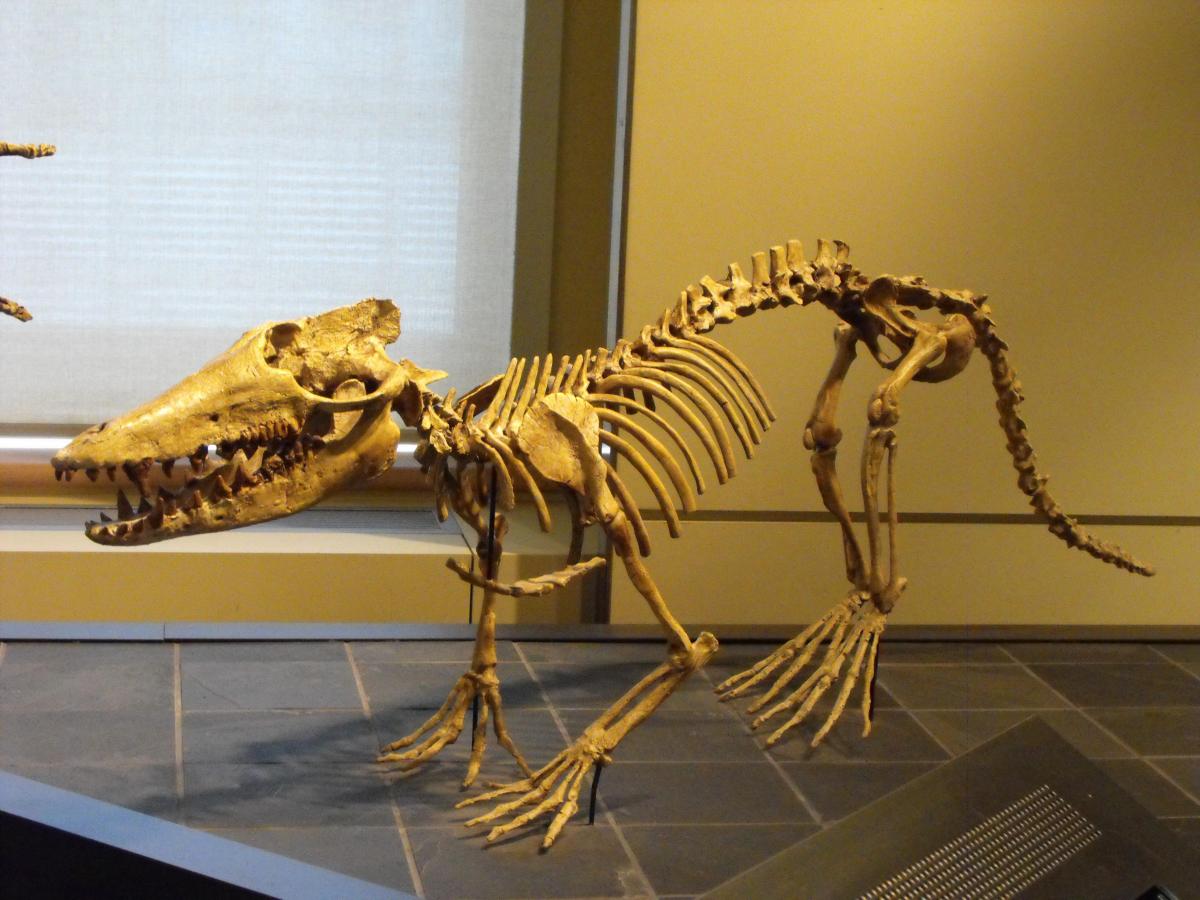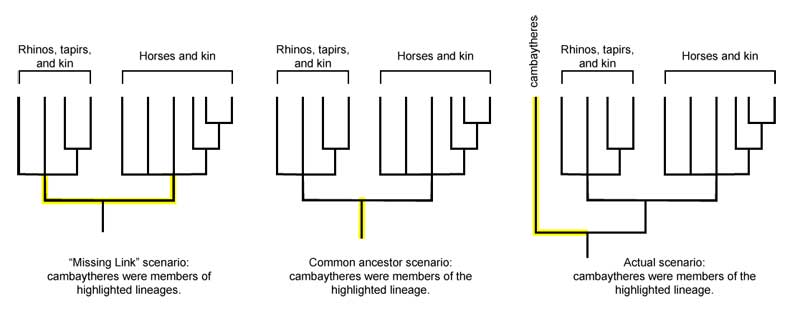Let me start this post by admitting that looking to the work of the Understanding Evolution team for examples of excellent science writing is not unlike looking to Glenn Branch for examples of quote-mining in obscure Scopes-related reporting—it’s pretty much a fish-in-the-barrel scenario. As I have noted many times on this blog, Understanding Evolution is chock-a-block with quality materials for educators and evolution-minded people alike. Frankly, I am pretty proud of myself for not having used it for a Well Said! post yet. But I can resist the temptation no longer; I have to tip my hat to this: New fossils are “no missing link.” The piece was written by my friend Anna Thanukos, and is about a study on which another friend of mine, Luke Holbrook of Rowan University, is an author—so it’s a twofer! But I was drawn to this topic and write-up for reasons other than nepotism, I promise.
The paper, by an international team of scientists, describes well-preserved fossil material of a 54.5-million-year-old animal called Cambaytherium thewissi, and explores its placement on the evolutionary tree of hoofed mammals. By way of background, hoofed mammals are divided up into two big clades: perissodactyls and artiodactyls, which are in turn defined by toes—in particular, by how many toes the animal has.
 Perissodactyls, which include horses, rhinos, and tapirs, all have an odd number of toes; artiodactyls, which include antelope, pigs, and whales (yep, whales. Such a cool story…but probably for another day), all have an even number of toes (or their ancestors did, in the case of whales). To be clear, there are a lot of other diagnostic traits that classify an animal as either a perissodactyl or artiodactyl—humans have an odd number of toes, for example, but we’re not perissodactyls, which is kind of a bummer because “perissodactyl” is really fun to say, tapirs are awesome (they like tummy rubs!), and baby tapirs are so cute that it’s ridiculous, but I digress.
Perissodactyls, which include horses, rhinos, and tapirs, all have an odd number of toes; artiodactyls, which include antelope, pigs, and whales (yep, whales. Such a cool story…but probably for another day), all have an even number of toes (or their ancestors did, in the case of whales). To be clear, there are a lot of other diagnostic traits that classify an animal as either a perissodactyl or artiodactyl—humans have an odd number of toes, for example, but we’re not perissodactyls, which is kind of a bummer because “perissodactyl” is really fun to say, tapirs are awesome (they like tummy rubs!), and baby tapirs are so cute that it’s ridiculous, but I digress.
Scientists have known for some time that cambaytheres should fit in somewhere in the hoofed-animal (specifically perissodactyl) zone of the tree of life, but before these latest C. thewissi fossils were uncovered in India, they didn’t know exactly where. The new fossil finds enabled paleontologists to place them right at the base of the perissodactyl clade. Aha! The Great Perissodactyl Missing Link! Right? Wrong. And here is where the Understanding Evolution piece comes in.
Without dampening the coolness of the find, the article explains—and this is key, with diagrams—why C. thewissi is “no missing link.”
[I]f cambaytheres are so closely related to rhinos and horses, can’t we call them a “missing link?” Because of their position on the Tree of Life. … [I]f cambaytheres were a “missing link,” it would imply that they are part of the ancestral lineage of either horses or rhinos and “link” these two animals to one another. Neither are cambaytheres the common ancestor of horses and rhinos. In fact, cambaytheres are not part of the ancestral lineage of rhinos or horses at all; they are simply close relatives of those ancestors.

The diagram, shown here with permission, uses evolutionary trees to illustrate these points, providing not only a good visual, but also a lesson in tree-reading. The parallel example and diagram of Archaeopteryx (not a missing link between dinosaurs and birds, but rather, a member of an early branching bird lineage) helps to reinforce these points.
Anna then goes on to explain why it is that we shouldn’t be surprised to have found a cousin rather than a direct link:
Paleontologists know that these “linking” lineages and ancestral lineages existed, but they don’t necessarily expect to find these organisms in the fossil record. That’s because the fossil record preserves only a miniscule proportion of the species that were alive at any given time period and because only a tiny proportion of fossils are exposed for us to discover. One study estimated that less than 2% of marine species preserved as fossils have been described!
If you keep reading, Anna uses the analogy that she let me borrow for my own missing links post, relating the probability of finding a direct ancestor in the fossil record to pulling a direct ancestor’s birth certificate at random from the town’s register of births. Such a clever way of explaining it—fair warning, Anna: I’ll be stealing that again.
The piece concludes by explaining why, despite the inapplicability of the catchy “missing link” label, discoveries like C. thewissi are still exciting and noteworthy:
Understanding that most fossil discoveries represent extinct relatives and not the ancestors of modern forms is important because it gives us a more accurate picture of evolution overall—as a vastly pruned bush with just a few surviving lineages, rather than as a march of progress, with ancient species transforming inevitably into modern organisms. In this case, we can see that, though there are only a few species of horses, tapirs, and rhinos alive today, their history is rich and diverse. Species like C. thewissi, which branched off just before the Perissodactyla originated, along with other fossil forms, give us a more complete understanding of that history.
It is actually this last point that was the deciding factor for me in terms of featuring this article. There was a recent study (and subsequent finger-pointing among journalists and science communicators [mini Well Said! to Ed Yong for this tweet that echoes my own view]) that alleged most scientific discoveries are accompanied by exaggerated press releases and reports. This is yet another reason why it is so important that scientists and science writers figure out how to talk about science without employing hyperbole or oversimplification as substitutes for engagement, clarity, and accuracy. This article not only does that itself, but it also provides a kind of how-to guide for describing the significance of new fossil discoveries, and for that I say, Well Said!

